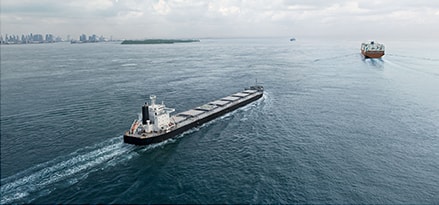Introduction
This technical topic explores ISO 8217, which stipulates that when there is a dispute over whether a test result meets or exceeds a specification limit, the processes contained in the relevant sections of ISO 4259 will be used to resolve the dispute.
The true value of a test result as defined by ISO 4259 represents the average of an infinite number of single results obtained by an infinite number of laboratories. Any one result is therefore simply a representation of this “true value.”
Testing and variability
A test run a number of times at the same laboratory, by the same person, on the same sample, under the same conditions, will not normally yield exactly the same answer for each test run. This is because there is always variability inherent in the test method itself.
This variability is quantified for each test method as “repeatability (r).” When two different laboratories test the same sample using the same method, the variability is called “reproducibility (R).” These parameters (repeatability and reproducibility) define the precision of a test method and are published as a part of each method. Each fuel characteristic is tested using a method whose precision is established in this way.
No single test can measure the true value with 100 per cent certainty. Each test method has an established precision, which is used to define how far from the true value any one test result might be expected, when simply considering the variability of the method itself. This means that if a test is carried out exactly as defined in the test method, the results will fall within the precision band of the test method 95 per cent of the time.
Meeting specifications
ISO 4259 sets out the statistical basis for using test precision to determine how much variability in results can be expected from test method variables alone, versus when a test result really does not meet a specification. It demonstrates that for a single test result to be considered as not meeting the specification, it should be more than (0.59 * Reproducibility) outside the limit. This is illustrated in the chart.
During bunkering operations, quality disputes usually arise when a customer sample analysis indicates an off-specification product, whereas the supplier’s certification indicates that the product is on specification. The supplier’s and customer’s test results would normally come from two different laboratories. In this case, the Reproducibility (R) of the test is used to define the precision range for the fuel characteristic that is in dispute. By defining Acceptance Limits in this way, ISO 4259 helps avoid unnecessary disputes over differences that are simply due to testing variability, not really failure to meet the specification.
Example of test method limits
|
Product |
RMG 380 |
|
Dispute |
Viscosity off specification |
|
Test method |
ISO 3104 |
|
Reproducibility Value |
R = 0.074 * x x = viscosity to be tested for a 380 cSt fuel; R = 28.12 |
|
Upper limit of precision band (As defined by ISO 4259) |
= A + 0.59 * R = 380 + 0.59 * 28.12 = 396.6 cSt A = Viscosity to be complied with; R = Reproducibility value |
In this example, the product can be considered as failing the specification when a single test result falls above 396.6 cSt. Such a result falls outside the variability expected from viscosity test precision alone.
ISO 8217 and ISO 4259 were used as a basis for this technical topic. Additional clarifying information can be found within these documents.


